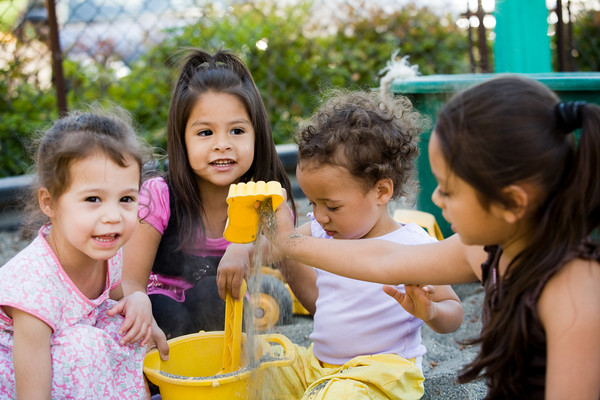The “back to school” buzz is in full force! In the midst of new school supplies and other preparations, some kids going back to school also means returning to a regular routine. For students whose families are struggling with homelessness, school often means more stability and welcome child care for the parents. Childcare can present a huge barrier for parents working to provide for their families and an obstacle that does not often receive much attention. For this reason, we are looking at Why Childcare Matters in a 5 part series running the next two weeks. We are excited to welcome another guest blogger Sarah who will be sharing her thoughts and research with us!
Written by Sarah Swihart, MPA candidate at Seattle University.
“Whats a woman to do?” But more importantly whats a working single parent or parents to do about finding affordable quality child care when they are earning just enough money to make ends meet? I’m not just talking “call someone up to take care of my child,” we are talking quality child care at an affordable cost. I hadn’t distinguished between the two until my recent conversation with Degale Cooper, the Services Director at the YWCA Family Village at Issaquah, she said it perfectly, “we need affordable child care for all, not babysitting mills but child care.” The difference between the two-will I pick up my child vs. will I pick up my child who just learned their ABC’s.

Low income and homeless families have very few choices if any at all when it comes to affordable quality child care. After hours spent on the phone only to be denied or put on a waiting list for child care, how is anyone to keep a job if they can’t find someone to watch their children? If a parent qualifies for subsidies from the government, they are offered a meager sum of money, which in most cases does not cover even half of the cost. Why does child care matter? Ms. Degale commented, “without sounding cliché, because our children matter, this nation’s future matters. To ready our children for school, we need child care.” This may resonate with many of you reading this, and if not, thank you for taking the time to learn more about it!
Single motherhood is common, but times are changing-more and more fathers are entering the single parenthood club too. My main focus for this blog series will be women to align with Firesteel’s emphasis on how family homelessness affects women and children; however I do want to recognize the increasing number of single fathers. According to the Population Reference Bureau, of the 75 million children, 24% live in single-mother families-that’s 18 million children who are living with a single-mother, 7 out of 10 of those children are poor or low-income. This means low-income mothers are living on meager wages some no more than $24,000 per year attempting to provide food, housing, transportation, clothing, education, and child care. It can cost up to $1900 per month for one child for fulltime quality child care, yet the government only allows for $33 per day in child care subsidies. What choices does a mother have other than a babysitting mill?
I’m writing this series not because I’m a mother (because I’m not). I’m writing this as a woman who cares about children, families, because I care about ending the cycle of poverty. I want to interrupt hopelessness by interrupting assumptions about people who are part of the system, who work 60 hours a week to make ends meet. I grew up with crummy babysitters and my sister has struggled for years, from one abusive relationship to the next because she can’t earn enough money on minimum wage in Indiana to pay for rent, food, school supplies, car insurance, and CHILDCARE. She adores her children, but how does one keep going when they can’t provide a life for those they live for?
I originally wanted to open this five part series on “Why Child Care Matters” with a brief history lesson. A lesson of why times are and continue to change for women, “why women still can’t have it all” as Anne-Marie Slaughter said so eloquently in her Atlantic article. I decided to step away from history and remain in the present. I’m not worried about why women can’t have it all, I’m concerned with why all women and families can’t have it all. This “all” is defined differently for all of us, but what if “all” are the basic necessities? Access to healthy food, clean affordable housing, water, heat, education, and quality child care so that these parents can give their children hope of a better future? So that they too can work, have self-worth, perhaps go back to school; do many of the things that so many of us take for granted.

Times have changed, yes more and more women are entering the workforce at executive levels and life work balance is a constant struggle for the few privileged that have time to think about this. I’m tired of it, what about our sisters and brothers who don’t? What if more energy was spent on talking about the 99% rather than the 1%? So forget history, forget about hating on the 1%. I’ll be focused on why access to quality child care is a barrier and leads to homelessness and prevents us from ending the cycle of poverty. To learn more, keep reading and most importantly I want to hear from you. I’m by no means an expert; I’m here because I care.
Further Resources
- Single Motherhood in the United States – A Snapshot (2012)
- Homelessness Among Washington’s Children Continues to Grow (Columbia Legal Services)
- Legislation Proposed to Increase Homeless Families’ Access to Child Care